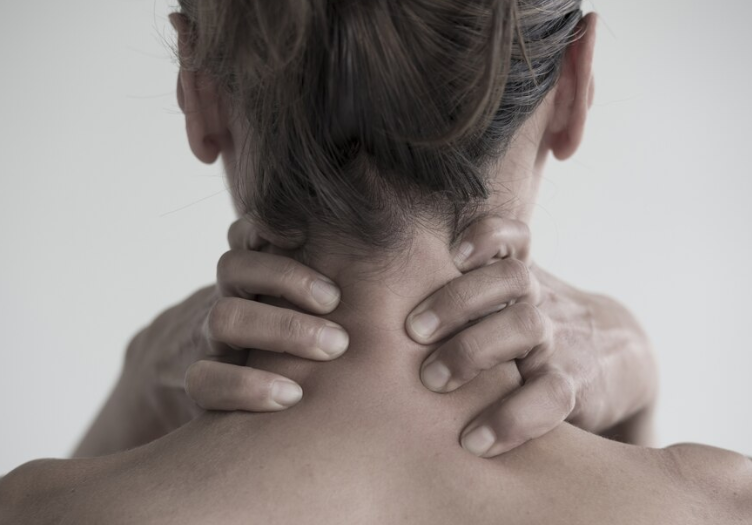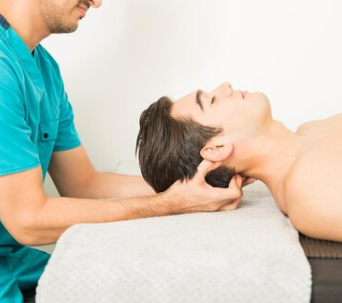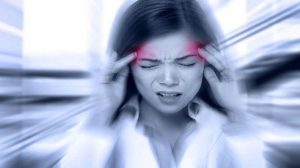What is a cervicogenic headache?
Firstly, the term “cervicogenic” means produced by the neck. Thus, cervicogenic headaches arise from structures in the neck. Namely, the upper cervical and atlanto-occipital joints are affected, and the resultant pain is perceived in the head and face.
The main symptoms of a cervicogenic headache are a combination of unilateral pain (more or isolated pain on one side), and diffuse shoulder and arm pain on the same side of the headache.
Why do these headaches happen?
A cervicogenic headache is thought to be a referred pain from irritation in cervical structures. Specifically, it is the structures that are supplied by the C1, C2, and C3 nerves. Therefore, any of the structures supplied by the C1–C3 spinal nerves could be the source for a cervicogenic headache.
Oftentimes, it is hard to pinpoint the exact structure. This may include the joints, disc, ligaments, and musculature. Additionally, the lower cervical spine may play an indirect role in pain production if it is dysfunctional, In fact, this finding is more common in patients with a history of whiplash.
How do we differentiate cervicogenic headaches from other types?
Cervicogenic headaches usually have a unique set of symptoms and when tested in clinic, have a clear relationship with the neck. If you are interested in other headache types you may find more information at headache.org. The following is the clinical presentation of a cervicogenic headache:
- Unilateral dominant headaches, usually start at the back and wrap around to the front
- Decreased neck range of motion and reports of stiffness
- Headaches are increased by neck movements or certain postures
- Tenderness to the touch on the upper cervical spine
- Weakness in the deep neck flexor musculature
- Patients have increased tightness and trigger points in upper trapezius, levator scapulae, scalenes and suboccipital extensors
It is rare to have other symptoms with cervicogenic headaches like light and noise sensitivity, visual disturbances, or vomiting, which helps to differentiate it from other headache types like a migraine.
How do I treat my headache?
Luckily, Physiotherapy Treatment has been shown to be effective in managing cervicogenic headaches. The following are potential types of treatments and exercises that may be used during a session:
- Cervical spine manipulation or mobilization
- Strengthening exercises including deep neck flexors and extensors
- Thoracic spine thrust manipulation & exercise
- C1-C2 Self-sustained Natural Apophyseal Glide (SNAG) shown to be effective for reducing cervicogenic headache symptoms
- Re-education of good posture habits
- Trigger point therapy
Having issues with headache and neck pain?
Look for relief with PhysioNow! With 10 locations across the GTA from Burlington, Oakville, Mississauga and Etobicoke, we have many experienced clinicians ready to help you feel better. Our Registered Physiotherapists and Massage Therapists are all experts at working with headaches and neck pain. Get started with your pain relief journey and book with PhysioNow today!






